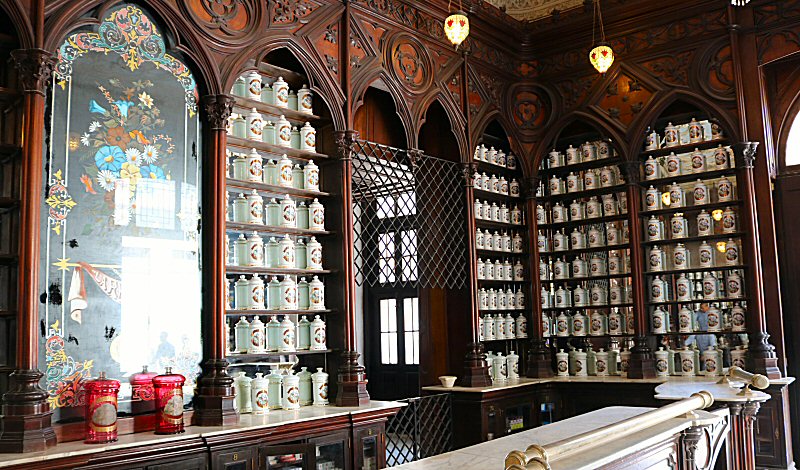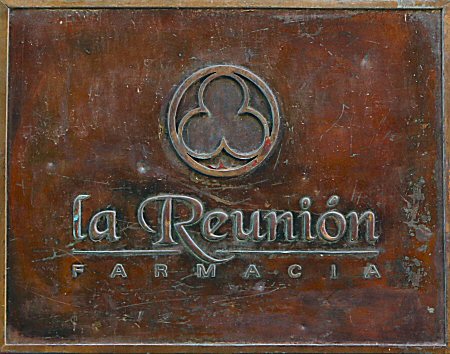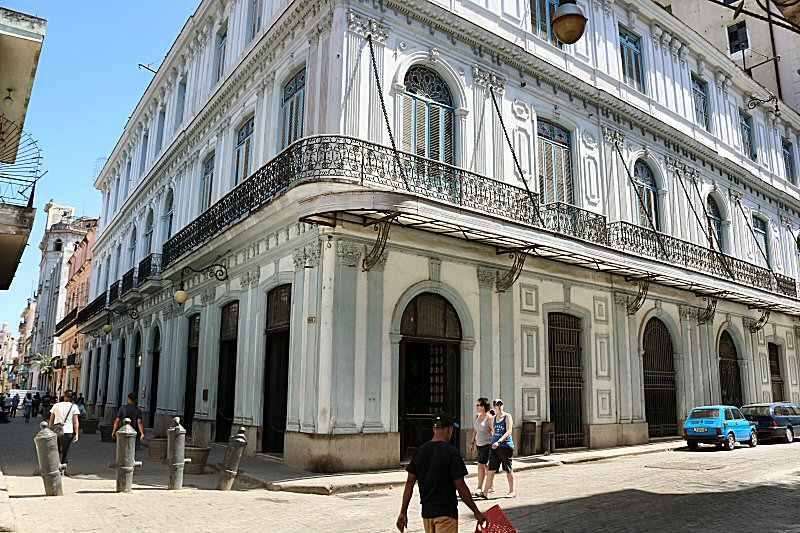
The Museo Farmacia Habanera
continues to operate as a pharmacy, while it has enabled an
exhibition area that gives information about the old
pharmacies, and the development of pharmaceutical science
throughout the history of Cuba. It also exhibits many
apothecary instruments and containers found through the
excavations in houses of the habaneros, some even with the
remains of the medications that they contained.
In 1853, some Catalan
pharmacists, including Valentín Catalá y Pradell, José Sarrá
y Catalá and José Sarrá y Valldejulí, arrived in Havana.
They all were apothecaries in Barcelona, and like thousands
of their compatriots, they went to Cuba to try their luck in
business. It was a period during which the medicaments used
on the island were only phytotherapeutcics in most cases.
They met another
apothecary, Antonio González López, and established together
a pharmaceutical company, the Catalá, Sarrá y
Compañía, in a domestic house on the
Teniente Rey street #22 (current #261). They call it the
pharmacy La Réunion, because for the first time in Havana
they sold allopathic and homeopathic medicines together at
the same place. In 1865, Valentín Catalá returned to
Barcelona after having sold his share in the company to his
relatives and partners, so that the company continued under
the name of Sarrá y Compañía. They buy the farm 767, located
on the Compostela street #95A to build a warehouse. In 1868,
when Antonio González López also sold his share, there
remained only two partners: José Sarrá y Catalá and José
Sarrá y Valldejulí. In 1877 José Sarrá y Catalá died in
Barcelona by heart attack, so that José Sarrá y Valldejulí
became the only owner of the company.
José Sarrá transformed the
shop into an elegant drugstore by decorating it with shelves
and counters of precious wood and stained glass windows,
impressed by the French fashion that dominated Havana in the
last quarter of the 19th century. He changed all the
furniture. At the same time, he expanded the laboratory and
the office by buying the adjoining houses on the Compostela
street (#83 and #85). He bought new machinery. In 1886 La
Réunion became one of the most distinguished pharmacies in
Havana, and in a short time it grew into the
largest pharmacy in the Latin America, including Cuba, and
the world’s second largest pharmacy after the American
Johnson. The dazzling growth of the company brought great
social prestige to José Sarrá y
Valdejulí, so that he became the member of the
Junta Superior de Instrucción Pública de Cuba
(Higher Board of the Public Instruction of
Cuba), and the founder and later the director of the
Pharmaceutical College (1882). The Spanish King Alfonso XII
granted him the honorary title of Pharmacist and Druggist of
the Royal House, as well as the right to use the Royal Coat
of Arms on the labels and bills of the Drugstore Sarrá.
Upon the sudden death of
José Sarrá y Valldejulí on his trip to Catalonia in 1898,
the property passed to the hands of his wife Celia Hernández
y Buchó, and the company was renamed as Viuda
de Sarrá e Hijos (Widow Sarrá and Children). The first-borne
male child Ernesto that was expected to continue the family
tradition, had just finished his doctorate in pharmacy in
the University of Havana (1897). In
the time of Ernesto Sarrá y Hernández the seven storey
building next to the La Réunion on the Compostela street,
was built and served as warehouse. In the same period the
third storey was added to the building of La Réunion.
In 1912 Ernesto built the Velasco
Sarrá Palace for his sister Maria Teresa that had just
married Dionisio Velasco. The palace is currently the
headquarter of the Embassy of Spain.
In the first decade of the
20th century, Ernesto Sarrá y
Hernández bought more than 20 buildings in the
block, bordered by the Teniente Rey, the Compostela, the
Muralla and the Habana streets, and merged them, so that
with 46 buildings, 600 employees and more than 500 products
the pharmaceutical company became one of the
most important business groups in Cuba in 1914.
Ernesto gave great
importance to the publicity of the company particularly by
distrubiting advertisements of large dimension on which his
name was written in big fonts. Thus, the pharmacy began to
be known popularly by his surname (Farmacia
Sarrá).
In 1941 he apportioned the
company equally among his daughters Ernestina, Hilda and
Ophelia.
After the revolution, La
Réunion was expropriated and continued to function as
Municipal Pharmacy of Old Havana until 1999. The adjoining
rooms were occupied by the Medicine Supply Company
(ENSUFARMA), and in the rest of the block the Saúl Delgado
Industry of the Ministry of Public Health (MINSAP),
dedicated to the production of liquid preparations, was
established.
In 2004 the building
opened its doors as a pharmacy museum (Museo
Farmacia Habanera) after a meticulous restoration with great
respect to its authenticity.



